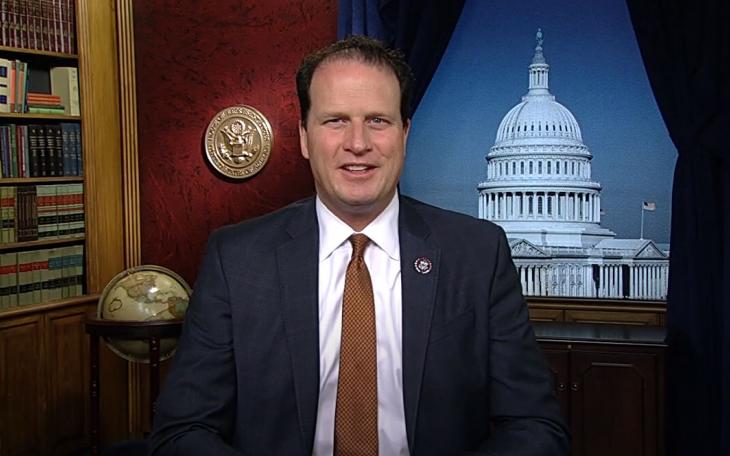“We’ve got to do something,” Mayor Dwain Morrison said at Tuesday’s City Council meeting, beginning his address on the contentious fire access road issue that has put many local housing developers and contractors on hold. “We’ve got to do something about it; we’ve got to allow these developers to develop, and we have to build houses so that we can take care of our problem.”
Morrison took the lead on introducing the hot topic issue, explaining the problems with a current City Ordinance which dictates that all housing developments of 30 houses or more be built with a second fire apparatus access road.
In the past, San Angelo has been developed in stages, the Mayor said, allowing subdivisions to be opened, sold, and for construction to start on other contiguous phases until eventually an access road was formed.
The phased building approach had previously been approved under former Fire Marshal Don Vardeman from 2000 up to 2011, however as Vardeman moved out of the Fire Marshal seat and his successor Ross Coleman stepped in, contractors began to take issue with the “new” interpretation of the ordinance, as Coleman adhered strictly to the 30 house rule.
The problem with this strict interpretation, contractors and developers contend, is that it stifles housing development by imposing high-cost obligations of road construction that will drive up the prices of projects, materials and ultimately, houses.
On the other hand, the Fire Marshal and Fire Chief cite the importance of ingress and egress as safety issues that become ever more pertinent as population density increases.
City staff have been working on hashing out a compromise between developers, contractors, the Fire Marshal and other involved entities in order to address both the development and business concerns, while maintaining a standard of safety for current and future citizens. The Mayor said he thought they were nearing a compromise last Friday, but that in the end “no one was happy. The Fire Marshal wasn’t happy, the developers weren’t happy, so that tells me we had a pretty good compromise right there.”
Initially, developers were looking to raise the 30-house standard up to 300 with one improved and one unimproved road and setting the next trigger at 600 houses, where two improved roads would be necessary. The Fire Marshal was not agreeable to these terms and said he’d prefer to keep the first trigger down to 100, and the Mayor pushed back up to 125.
Tuesday, Morrison introduced the last compromise as one allowing for subdivisions of up to 125 houses with one access road only; those with 126 to 250 houses requiring two access roads, one of which is “unimproved”, or caliche, and those with 251 or more houses requiring two improved roads.
“We also decided that we would grandfather every plat that had already been approved,” he said. “Every plat that had been approved within the last 15-20 years would be grandfathered under existing laws…we also said that we would allow developers, if there was a problem with these plats, that they would be allowed to bring their problems to City Council…and we would be able to grant a variance so they could continue with their business…”
Council picked up on this last compromise as a starting point for discussion Tuesday and heard arguments from parties on both sides of the issue, including nearly an hour of monologue from various builders, contractors, engineers and developers.
Arguments to raise the bar were aplenty, many citing a past exception that could be seen as precedent for current demands, and others speaking of fire conscious building methods that were alleged to make the hazard argument “highly unlikely”.
Russell Gully of SKG Engineering spoke on behalf of the development side, calling attention to what he said appeared to be a misinterpretation of the code.
“You read the code, you accept it in its entirety,” Gully began. “Appendix D, 107, does state 30 [houses], and absolutely, it does. And underneath it in exception two it says, ‘The number of dwelling units on a single fire apparatus access road shall not be increased unless the fire apparatus access road will connect with future developments.’ It’s there in black and white: it will connect with future developments. That’s what we’ve hung our hat on, that’s what developers have used, that’s the way San Angelo has developed.
“’Future’ is not defined in the codebook,” he continued. “It says ‘where words aren’t defined, refer to Webster’s’, so you look at Webster’s for the definition of future: a time yet to come, coming after the present. It doesn’t say a number. It doesn’t say a specific time. So it’s time ahead of us, so we can’t define how quickly we will develop out. Two years ago we were wondering if we were going to do another development. Today, we’re going crazy with them. It’s not that they’re coming up from 30, because they’re not. They’re coming down from infinity, an undefined number.”
Gully referred to a decision made in 2011 for Rio Concho West, which allowed 300 houses to be built at that time without the requirement of a second entry point. This decision, Gully said, set the precedent for future subdivisions and is also the number developers would like to stick with in defining an update to the city’s ordinance.
Developer David Darnell agreed with Gully’s assertions, adding only that he has taken steps to clear debris and brush from his land in order to prevent fires and touching on the feasibility of building roads for every new subdivision.
“We recognize the potential for fire hazards in west Texas, especially when we don’t ever get any rain,” Darnell said. He then added, “It’s not feasible for us to build a road two miles to Red Bluff or four and a half miles to come out on highway 67. There has to be some common sense involved on both parties. I’ve been here in San Angelo all my life. I’ve worked for every contractor, every developer that’s ever put a street down or a water and sewer line down…these accesses over time just took care of themselves. No one person…was ever made to build a road four or five miles to another access while they were developing their property.”
Gary Cortese, President of Affordable Family Homes, added to Darnell’s statement about clearing brush and debris by saying that he has taken those measure as well, but that new houses are far less likely to burn in the first place with all of the enhanced fire prevention mechanisms employed by modern day builders.
“We have a fine, fine fire department here that puts out fires for us,” Cortese said. “We spend lots of money on fire fighting. New homes don’t burn as often as they used to. They’re well equipped with fire safety features.”
Cortese says he has been building in San Angelo since the ‘70s and has never encountered the access road problem before. “It’s an unusual event,” he said. He also added that 25 percent of the cost of building a home is permitting and regulatory fees, and that for each extra $1,000 added to the cost of a home in the state of Texas some 25,000 potential homeowners are lost. ‘That’s a quarter of the population of San Angelo,’ he said.
“Just remember home ownership is the American dream. If Council decides to base policy on highly unlikely events, so be it. But just remember, you’ll be pricing the average San Angeloan out of the American dream. For those of us that already own houses, who cares? But what about…the young people that are going to be working hard saving, trying to get a down payment on a home,” Cortese concluded to a round of applause from the packed Council Chambers.
At this point, a member of the San Angelo Association of Realtors (SAAR) took the podium and stated that they stand in support of the Home Builder’s Association and the numbers they present. Making a visual impact, he asked all of those present with the SAAR to stand, at which point roughly 30 men and women rose from their seats.
Public comment continued on the issue for some time, then Councilman Don Vardeman spoke on how he made the decisions he did as Fire Marshal.
“The way that I did this was to use common sense and safety coupled together,” he said. “I used my best discretion. There’s no way that I would allow 300 homes next to a railroad track for instance, because you not only have to look at the fire hazard, you also have to look at hazardous chemicals…with the train wrecks…even though the city has slowed those things down the hazard is still there and still very real. In other instances I allowed 300 because it was reasonably safe in order to do that.“
Vardeman continued to say that he had always tried to maintain a pro-business stance that kept citizen safety in mind.
After all builders and developers had been heard, Fire Chief Brian Dunn addressed the audience and Council. Dunn said he agreed that 30 houses was a bit strict, but stressed that access to developments is vital in emergency situations.
When a fire occurs, Dunn said, a water main is lain down that may block off access to the street. Showing a picture of a spaghetti of hoses, Dunn explained that several fire units respond to structure fires, and that crossing the street with a vehicle after the hoses have been lain becomes impossible, as they may rupture. Further, emergency vehicles often respond from different access points, and residents of subdivisions may need to be evacuated from the area if a larger fire breaks out.
A lack of access roads makes this difficult and could cause safety issues.
“I understand that it is a monetary issue for the developers and we are trying to at least make it where they can do some work, but for me to tell you that this large number is ok, I can’t in good conscience do that,” Dunn said. “These codes are put in place as minimum standards for communities that adopt them…they’re put in place because they’ve happened multiple times and they’re trying to prevent them from happening again.”
Following over an hour of deliberation, the item went to vote. Council had agreed to make a motion to raise the number from 30 up to 165 houses with a single fire apparatus access road, more than five times the amount of housing that was allowed in the previous ordinance. For 166 houses up to 275, two access roads would be required, one of which could be unimproved. For developments with 276 or more houses two improved roads would be standard.
Council voted in favor of the item, 6-1, with Marty Self opposed.
Subscribe to the LIVE! Daily
Required






Comments
Listed By: Samantha Miller
- Log in or register to post comments
Permalink- Log in or register to post comments
PermalinkListed By: ajax frsa
- Log in or register to post comments
PermalinkListed By: J D
- Log in or register to post comments
PermalinkListed By: Anyone Concerned
- Log in or register to post comments
PermalinkListed By: J D
- Log in or register to post comments
PermalinkListed By: Anyone Concerned
- Log in or register to post comments
PermalinkListed By: George Mann
- Log in or register to post comments
PermalinkPost a comment to this article here: